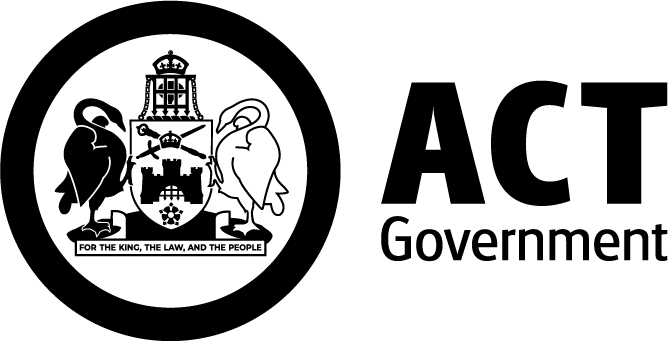Career education and pathways for students
Explore how our public schools prepare secondary students for their future careers.
Our public schools offer a range of programs, pathways and tools to help your child learn important skills for the future.
These help them:
- explore and get ready for different job options
- decide what careers might be right for them
- transition to the workforce.
Opportunities while at school
Career Tools
All our high schools and colleges get free access to the Career Tools platform.
The platform enables each school to customise its own website for career information and opportunities.
This includes a newsfeed and information on career education and pathway opportunities, tailored to your school community.
- ACT Home Education
- Alfred Deakin High School
- Amaroo School
- Aunty Agnes Shea High School
- Belconnen High School
- Black Mountain School
- Calwell High School
- Campbell High School
- Canberra College
- Canberra High School
- Caroline Chisholm School
- CCCares
- CIT Pathways College
- Dickson College
- Erindale College
- Evelyn Scott
- Flexible Education ACT
- Gold Creek School
- Gungahlin College
- Harrison School
- Hawker College
- Kingsford Smith School
- Lake Tuggeranong College
- Lanyon High School
- Lyneham High School
- Melba Copland Secondary School
- Melrose High School
- Mount Stromlo High School
- Namadgi School
- Narrabundah College
- Shirley Smith High School
- Telopea Park School
- The Woden School
- UC High School Kaleen
- UC Senior Secondary College Lake Ginninderra
- Wanniassa School
Vocational Learning Programs
Vocational Learning Programs (VLPs) support students in years 9 to 12 to explore the world of work. They do this through activities such as:
- work experience
- industry immersion activities
- industry speakers.
VLPs provide students with:
- hands-on experience
- the chance to build skills
- accredited and non-accredited training
- programs designed for different skill levels.
We have previously delivered programs in these sectors:
- allied health
- automotive
- building and construction
- business
- community services
- digital technologies
- electrical
- hospitality
- information technology.
To find out more, including about VLPs currently available:
- contact your school's careers team
- visit your school's Career Tools website (Vocational Learning Programs under the Students tab).
Work experience
Work Experience (WEX) supports secondary students to:
- test career choices by giving them a chance to see different aspects of work
- get ready to move from school to working life.
It is a short-term unpaid placement in a work setting, usually at a registered business.
Students observe work and may be asked to do light tasks, which the host employer oversees.
Work placements can be linked to a specific course of study. If done in years 11 and 12, the placement can go towards the requirements of the ACT Senior Secondary Certificate.
To find out more:
- contact your school's careers team
- visit your school's Career Tools website (Workplace Learning tab).
Australian School-based Apprenticeships
Australian School-based Apprenticeships (ASbAs) are part of the national Australian Apprenticeship system.
ASbAs combine part-time employment with training. These go towards:
- a nationally-recognised qualification
- completing a Senior Secondary Certificate.
To complete an ASbA your child must:
- be aged at least 15 years
- be enrolled in an ACT school or registered for home education
- be employed by a business on a part-time basis (casual employees cannot do an ASbA in the ACT)
- be doing a qualification that is an ASbA pathway on the ACT Qualifications Register
- be doing their training at an approved Registered Training Organisation (RTO) during the year, including school holidays
- do these required work and training hours, no more and no less, averaged over 3 months:
- Certificate II – 11-20 hours per week of work and training
- Certificate III – 15-20 hours per week of work and training.
ASbAs can be recognised by the ACT Board of Senior Secondary Studies (BSSS) as either:
- External VET Credit (E) units
- ASbA Workplace Training (W) Units on the ACT Senior Secondary Certificate (SCC).
More information on apprenticeships
Head Start program
Head Start is an Australian School-based Apprenticeship (ASbA) initiative.
It supports 50 students from ACT public schools to do ASbAs with local employers.
The program provides:
- a targeted recruitment process to ensure the ‘best match’ for each student and employer
- tailored work experience placements and pre-vocational training to help students transition into the world of work prior to the ASbA starting
- ongoing support to students, schools, parents and employers from a team.
Head Start targets skills that are in high demand or where there are skill shortages. This includes new and emerging industries.
To find out more:
- contact your school's careers team
- visit your school's Career Tools website (Workplace Learning tab).
Opportunities for school leavers
There are many ways for school leavers to transition to further education, training or jobs.
These government websites have more information:
Contact the career pathways and transitions team
For more details or if you have questions, contact your school's careers team or contact us.
Email
careers@act.edu.au
Call
02 6205 3253
